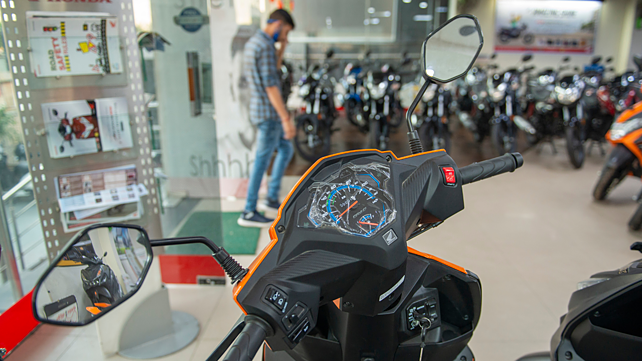
Unlike the month of August, auto retail sales in September fell by 5% at 12,96,257 units when compared with the same month last year. As a result, the auto retail sales in the month of September 2020 stood at 13,68,307 units according to Federations of Automobile Dealer Association (FADA).
However, compared to September’19 (a regular pre-COVID month), overall retail sales continue to fall by -13.50%.
The primary reason for the retail sales sliding into the negative territory is that the two-wheeler segment saw a dip of 12% at 9,14,621units in September 2021 while it sold 10,33,895 units in the same month last year. Apart from this, a steep decline was observed in tractor sales of 24%.
| Segments | Sep-21 | Sep-20 | %Change |
| Two Wheelers | 9,14,621 | 10,33,895 | -12% |
| Three Wheelers | 36,612 | 24,262 | 51% |
| Passenger Vehicles | 2,33,308 | 2,00,576 | 16% |
| Tractors | 52,896 | 69,462 | -24% |
| Commercial Vehicles | 58,820 | 40,112 | 47% |
| Others | 3,945 | 3,236 | 22% |
| Total | 12,96,257 | 13,68,307 | -5% |
Vinkesh Gulati, President, FADA, said that auto retail in September has taken a pause as overall sales were down by -5%. During the H1FY22, while the overall retails were up by 35%, the same was down by -29% compared to 2019, a pre-COVID year. On a long term basis, except tractors which grew by 19% and PV, which has almost reached pre-COVID levels, all the other segments were in red.
He pointed out that the 2W category continues to play spoilsport as the entry-level segment is yet to witness healthy growth. This segment’s performance is becoming critical for the overall 2W to come back on the path of recovery as dealer inventory rises to 30-35 days in anticipation of a good festive. Semiconductor shortage has also started impacting the 150+ cc segment.
“The 3W segment is now showing clear signs of tactical shift from ICE to EVs as the ratio has hit a 60:40 split. With offices and educational institutions slowly opening up, electrification of 3W’s will gather a greater momentum in months to come,” he added.
FADA is cautious about the festive season, as the full-blown semiconductor crises continue to hinder PV sales as vehicle inventory at dealers end dip to record lows of 15-20 days during the current fiscal. With high demand in this segment, a long waiting period frustrates and keeps enthusiast buyers in a fix.
Among all, commercial vehicles are finally showing greater strength as all subcategories continue to grow YoY. MCV, for the first time, also grows above the pre-COVID month of Sept’19.
FADA requests all two-wheeler OEMs to announce special schemes for demand revival in the entry-level 2W (below 125 cc) segment as the same continues to be a spoilsport.
Near Term Outlook
With India entering the 42 days festive period beginning today, the near term outlook for this year’s festive season will be a mixed bag.
While dealers have increased their inventory in the 2W category, PV inventory is at the lowest during this FY due to the ongoing semi-conductor crises.
The chip shortage looks less likely to ease within the next two quarters. As a result, PV sales are likely to stagnate even though OEMs are coming ahead with new launches to keep the customer excited.
With skyrocketing fuel prices and a drop in purchasing power, entry-level customers in rural India keep themselves from fulfilling their mobility needs.
India’s vaccination drive has reached remarkable momentum. This coupled with a less likelihood of a third wave in the near future and offices and educational institutions opening up in a phased manner, the apex body of automotive dealerships, anticipates a marginal recovery process to begin in the 2W space. Hence, FADA requests all 2W OEMs to roll out special promotions schemes to springboard 2W retails for a faster recovery, the statement from the association added.
Inventory at the end of September’21
o Average inventory for Passenger Vehicles ranges from 15-20 days
o Average inventory for Two – Wheelers ranges from 30-35 days